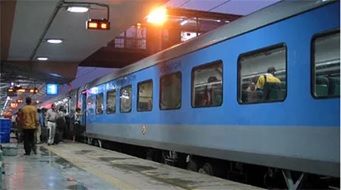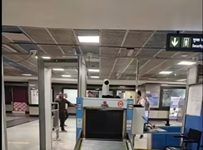In a bid to strengthen the safety system across the Indian rail network, the Railways has decided to install about 75,000 Artificial Intelligence (AI) -powered CCTV cameras in all coaches and locomotives at an estimated cost of Rs 15,000 crores. As per the finalised plan, 40,000 coaches, 14,000 locomotives, and 6000 EMUs will be equipped with AI-enabled CCTV cameras for which the high-value tender is set to be floated in October this year.
The Indian Railway is also exploring options for using technology such as Lidar — a method for determining ranges by targeting an object or a surface with a laser and measuring the time for the reflected light to return to the receiver — with the installation of AI-based CCTV cameras on every locomotive.
With the spate of derailments in recent times, the entire top brass of the railways has been seized with the matter and is exploring various ways to curb it effectively. Railway Minister Ashwini Vaishnaw and top officials have been holding meetings to finalise the range of CCTV cameras installed on locomotives equipped with AI.
Multiple vendors will be awarded contracts within 12 months to speed up the execution.
Indian Railways has already covered all major stations with high-resolution CCTV cameras and with the latest move, the entire rolling stock barring wagons of the public transporter will be covered with surveillance systems.
Currently, wagons are being equipped with RFID systems to monitor wagon movement.
The AI-based CCTV cameras in coaches and locos will be a major boost for the Railway’s safety mechanism, said a senior railways official.
While one coach will have six cameras, there will be four cameras in each locomotive to alert the loco pilot. The loco pilot can detect anything suspicious on the tracks through the two frontal high-resolution cameras which will alert the driver to put emergency brakes.
The AI after getting the image will process it to identify whether it’s a foreign object, unnatural or moving objects like animals or man and send an immediate alert to drivers.
The CCTV cameras can catch the details of objects from a certain distance while the trains need more than a km to come to a complete halt after applying the emergency brake. It’s a big challenge.
“We are also exploring the possibilities of linking the AI-powered cameras with the emergency braking system in case of unforeseen situations”, said a senior Railway official.
The recent derailment of 22 coaches of Sabarmati Express due to alleged sabotage could have caused a massive human casualty but for the keen eyes of loco pilot A P Bundela, 57, who spotted a “piece of old rail” lying on the track. His 15-year experience as a mail/ express driver came to probably his life’s best use when he jammed the emergency brakes of the train carrying 1,727 passengers and averted a major mishap.
While this has come as a sigh of relief, at least four recent instances of planting foreign objects on tracks such as boulders, wheels, and iron rods have run alarm bells to railway officials. They added that sensitive areas will also be identified for more intense patrolling








